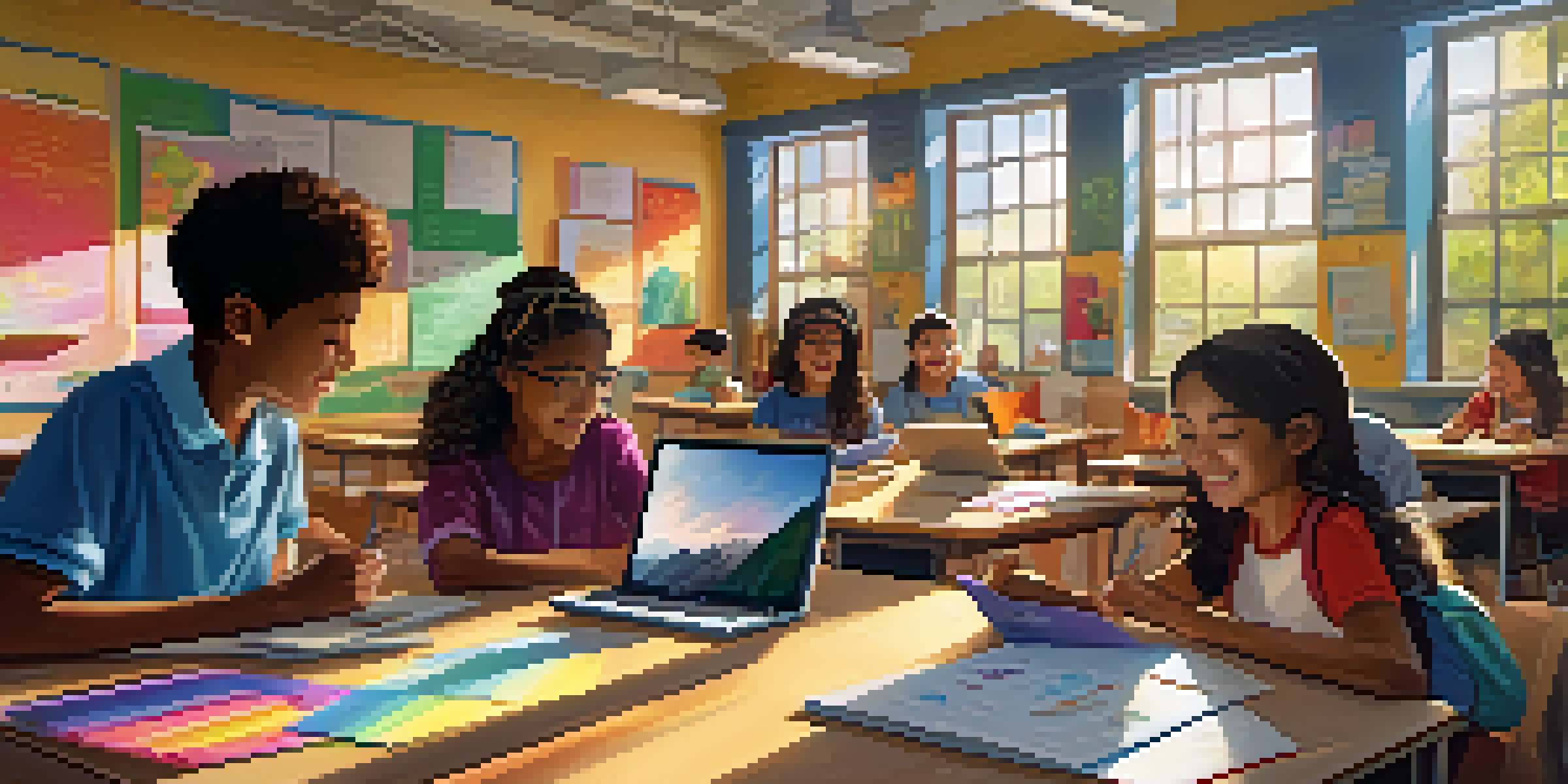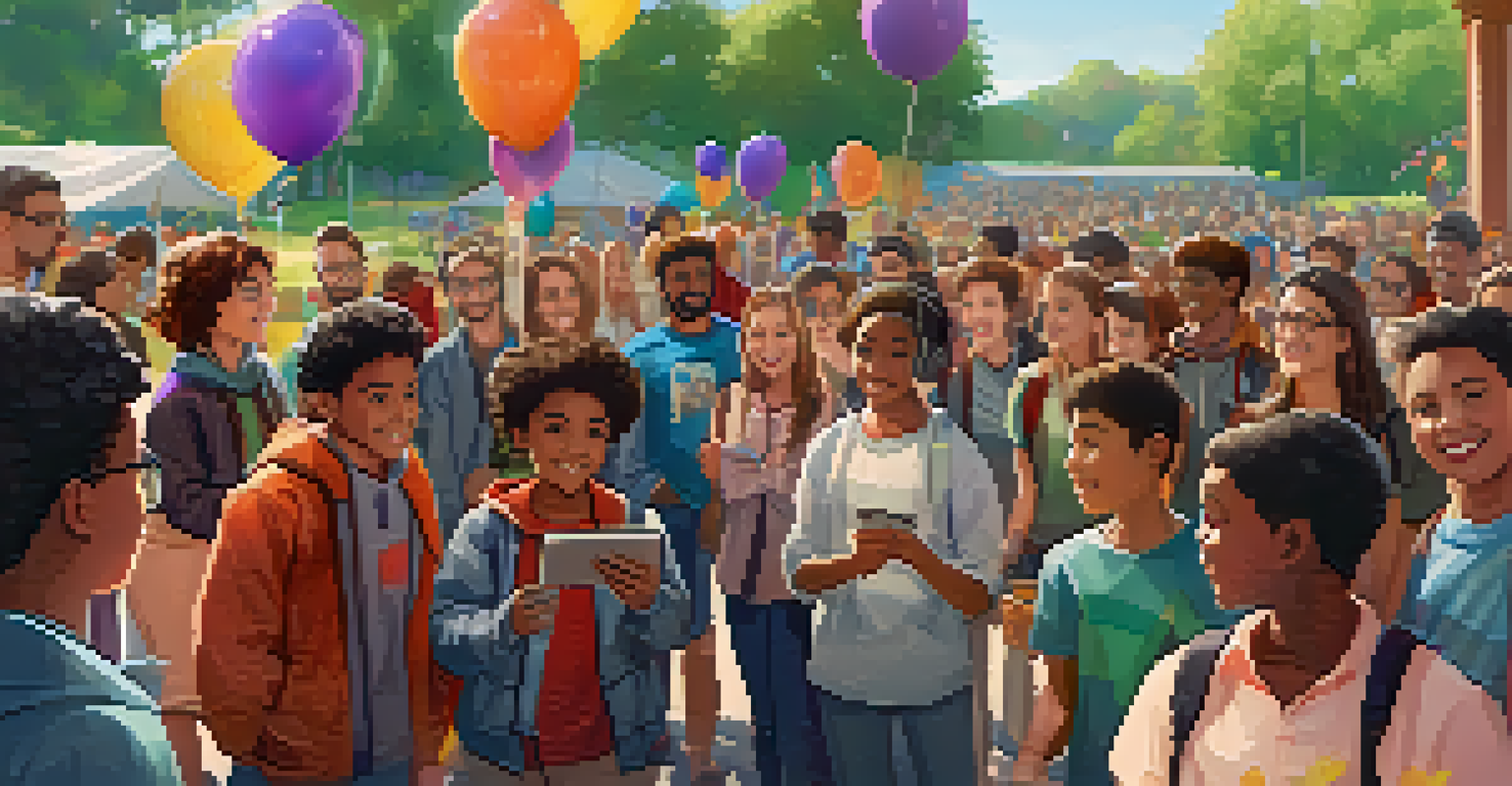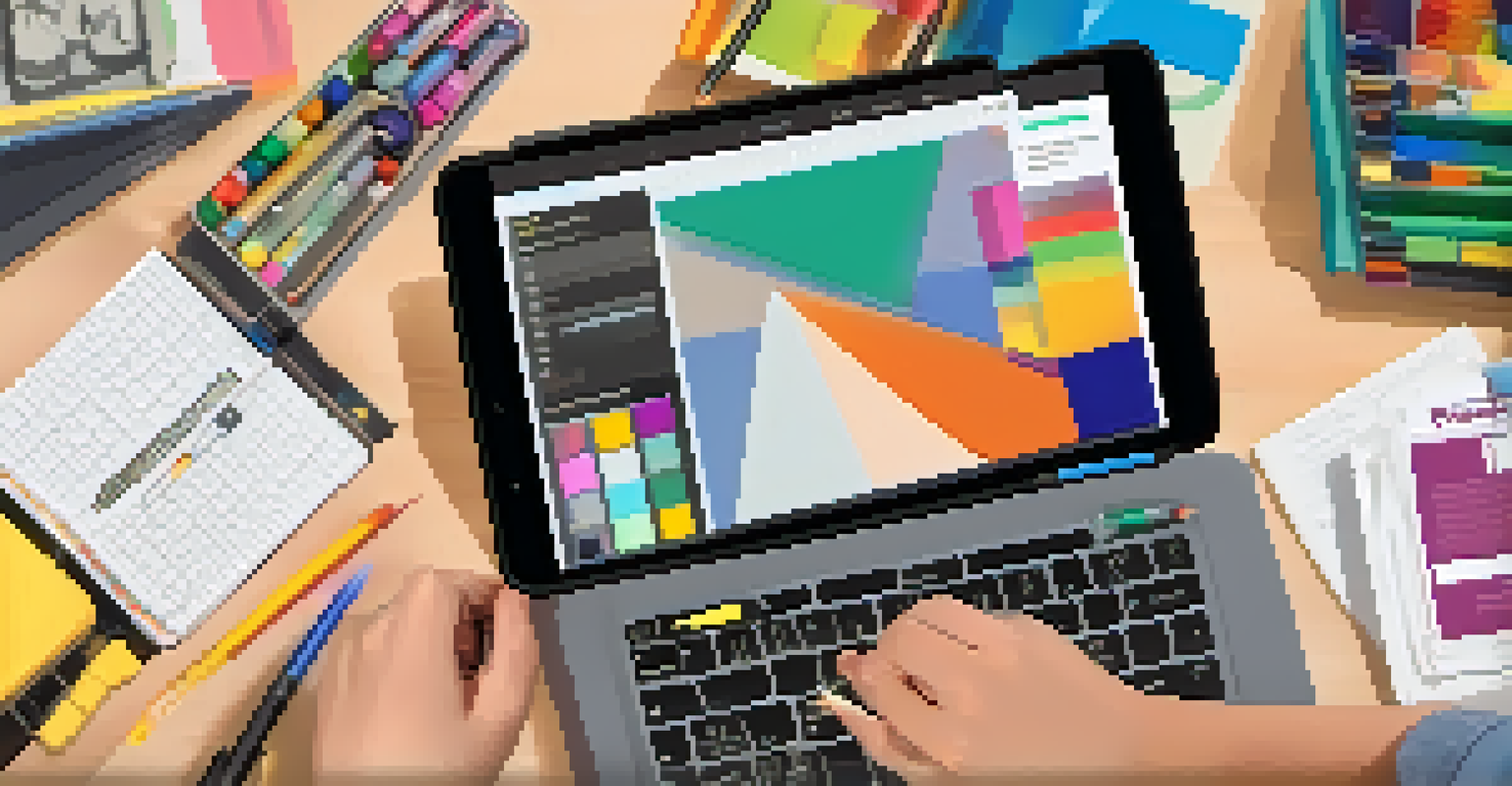Fostering Creativity Through Digital Storytelling in Classrooms

Understanding Digital Storytelling in Education
Digital storytelling blends traditional storytelling with digital tools, allowing students to express themselves creatively. This method encourages students to narrate their experiences or ideas using multimedia elements such as images, audio, and video. It’s not just about writing; it’s about creating a rich tapestry of expression that resonates with diverse learning styles.
Digital storytelling is a powerful way to engage students in learning and inspire them to express their thoughts and ideas creatively.
In classrooms, digital storytelling can take many forms, from creating a simple slideshow to producing a full-fledged video. This versatility makes it an attractive option for educators looking to engage students in a meaningful way. By integrating technology into storytelling, teachers can tap into the interests of today's digital-native students.
Ultimately, digital storytelling transforms the way students learn, making the process interactive and collaborative. It empowers them to take ownership of their narratives, fostering a deeper connection with the material. Through this approach, students become not just consumers of information, but active participants in their learning journey.
Benefits of Fostering Creativity in Students
Fostering creativity in students is essential for their overall development. Creativity encourages critical thinking, problem-solving skills, and the ability to adapt to various situations. These are crucial skills in today's ever-changing world, and digital storytelling provides a platform for students to practice and enhance them.

Moreover, when students engage in creative projects, they often become more motivated and invested in their learning. This intrinsic motivation can lead to improved academic performance and a more positive attitude toward school. By allowing students to express themselves creatively, educators can cultivate a more dynamic learning environment.
Digital Storytelling Enhances Learning
By integrating multimedia elements, digital storytelling transforms students into active participants in their learning journey.
Additionally, creativity fosters collaboration among students. Working on digital storytelling projects often involves teamwork, where students brainstorm ideas, share responsibilities, and provide feedback. This collaborative approach not only enhances their social skills but also encourages them to appreciate diverse perspectives.
Practical Tools for Digital Storytelling
There are numerous tools available to assist students in their digital storytelling endeavors. Platforms like Adobe Spark, Canva, and WeVideo offer user-friendly interfaces that make it easy for students to create visually appealing stories. These tools provide templates and resources that can simplify the storytelling process, making it accessible to all skill levels.
Creativity is intelligence having fun, and digital storytelling is a fantastic vehicle for students to explore that creativity.
In addition to these platforms, educators can introduce students to various multimedia elements, such as podcasts and digital comics. For instance, students can create audio narratives to accompany their visual stories, adding another layer of engagement. This variety allows students to choose the medium that best suits their style, further encouraging creativity.
As technology continues to evolve, so too do the tools available for digital storytelling. Educators should stay informed about new applications and software that can enrich their students' creative experiences. By embracing these tools, teachers can create a more engaging and modern classroom environment.
Incorporating Digital Storytelling into the Curriculum
Integrating digital storytelling into the curriculum requires thoughtful planning and consideration. Educators can start by identifying subjects or themes that lend themselves well to storytelling, such as history, literature, or science. By aligning these projects with curriculum standards, teachers can ensure that students are meeting educational goals while exploring their creativity.
Project-based learning is an effective method for incorporating digital storytelling. For example, students might research a historical event and present their findings through a digital story. This approach not only reinforces the subject matter but also allows students to practice research, writing, and digital skills in a cohesive manner.
Creativity Boosts Student Engagement
Fostering creativity through projects like digital storytelling motivates students and cultivates a dynamic learning environment.
Additionally, educators should encourage reflection throughout the storytelling process. By asking students to consider what they learned and how they approached their projects, teachers can help deepen their understanding of the material. This reflective practice enhances the learning experience and promotes a growth mindset.
Engaging Parents and the Community
Digital storytelling can extend beyond the classroom, engaging parents and the wider community. Schools can host events where students showcase their digital stories, inviting families to participate and share in the experience. This not only boosts student confidence but also strengthens the connection between school and home.
Moreover, involving the community can enrich the storytelling experience. Educators can collaborate with local organizations or professionals who can provide insights or resources related to students' projects. This partnership not only enhances the quality of the stories but also fosters a sense of belonging among students.
By creating opportunities for students to present their work to a larger audience, educators encourage public speaking and presentation skills. These experiences are invaluable as they prepare students for future endeavors, whether in academics or in their careers.
Challenges and Solutions in Digital Storytelling
While digital storytelling offers many benefits, there are challenges that educators may face. One common hurdle is ensuring that all students have access to the necessary technology. Schools must strive to provide equitable resources so that every student can participate fully in digital storytelling projects.
Another challenge is the varying levels of digital literacy among students. Some may be more comfortable with technology than others, which can create disparities in project outcomes. Educators can address this by incorporating digital literacy training into their lessons, ensuring that all students feel confident using the tools available to them.
Collaboration in Digital Projects
Digital storytelling encourages teamwork among students, enhancing their social skills and appreciation for diverse perspectives.
Finally, time constraints can pose a significant challenge in implementing digital storytelling projects. With packed curricula, finding the right balance can be tricky. Educators can mitigate this by integrating storytelling activities into existing lessons, making it a natural part of the learning process rather than an additional task.
The Future of Digital Storytelling in Education
As technology continues to advance, the future of digital storytelling in education looks promising. Emerging tools and platforms are making storytelling more interactive and immersive, allowing for even richer student experiences. Virtual reality and augmented reality are beginning to play a role in how stories are told and experienced in the classroom.
Moreover, as educators increasingly recognize the importance of creativity in learning, digital storytelling will likely become a staple in educational practices. This shift will encourage more innovative approaches to teaching and learning, empowering students to explore their creativity in new and exciting ways.

Ultimately, the integration of digital storytelling in education not only enhances creativity but also prepares students for a future where storytelling is increasingly important in various fields. By equipping students with these skills, educators are paving the way for a generation of innovative thinkers and communicators.